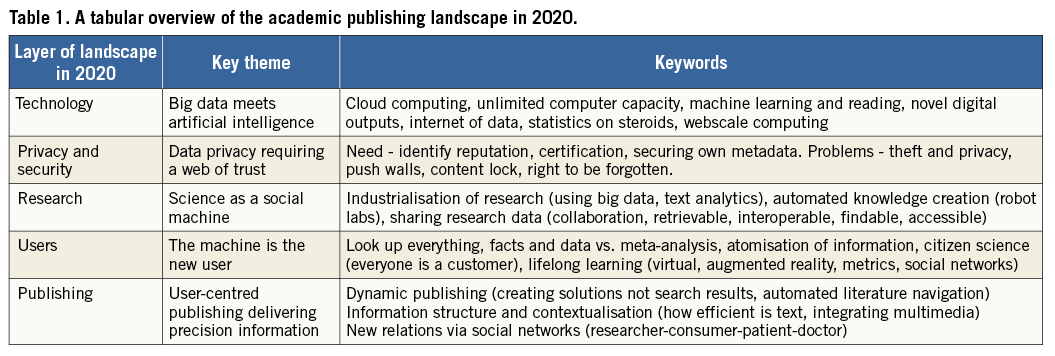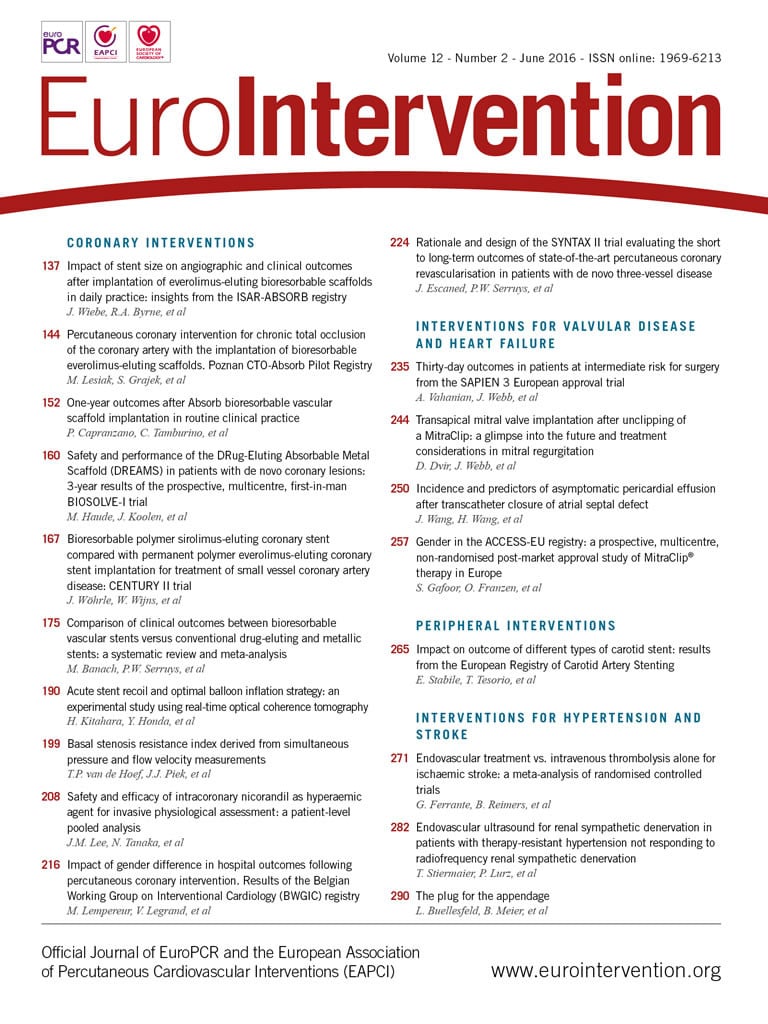
Prior to the EuroPCR 2016 Presidents and PCR Friends Dinner last month, the organisers hosted a stimulating debate entitled “Shaping the future of Interventional Cardiology”. Three distinguished panellists, Peter J. Fitzgerald, Martin Rothman and Martyn Thomas shared their thoughts and vision of the future of interventional cardiology. It was, by and large, an interesting and stimulating debate for a large audience of voracious guests. Nothing was mentioned with respect to academic publishing, which of course was not surprising as that was not the remit of the debate, and yet scientific dissemination is at the core of the advancement of our profession.
The International Association of Scientific, Technical & Medical Publishers (STM) is a global trade association for academic publishers with over 120 members in 21 countries accounting for approximately 66% of all journal articles. In the same month as EuroPCR, STM published their vision of the publishing landscape in 2020. In a rather complex yet novel visualisation, the STM Future Lab Committee set out to forecast future trends. In short, they postulate that new technologies will lead to a deeper and detailed manner of scientific exchange. In Table 1, the most significant examples of their vision for 2020 are provided. What is obvious is that the rapid advancement of new technologies will be the driver of modern scholarly communication. This advancement also brings with it cautious concerns that must be addressed in terms of data privacy and security, yet juxtaposed against the growing movement for the transparency and openness of data for all. Indeed, last month, the European Union’s science chief, Carlos Moedas, announced reforms indicating that publicly funded scientific papers published in Europe should be made free to access by 2020. This will certainly threaten the current subscription model used by many scientific journals. In the USA, the recent Federal Public Research Act (S.2695) is a similar step in this direction.

Interestingly, after 350 years of academic exchange using the written article format, we are seeing the continuing uptake of digital media inclusion. The next few years may see blogs, video essays and other online resources being considered as scholarly and as rigorous as printed articles. Already some universities are experimenting with digital dissertations, although Erasmus University Rotterdam may have been the first in 2011 with a dissertation completely on iPad. Perhaps it will only be a matter of time before the worlds of established publishing and educational (live) clinical cases intermix into a new digital format with the all-important indexing on PubMed. In fact, one journal has already taken the first steps towards this new frontier. The Journal of Video Experiments, with a respectable impact factor of 1.325, presents experimental research only in video format.
And finally, we will probably see a different concept of quality. Instead of quality measured in citation metrics, it may in the future be measured by page visits, downloads or numbers of comments or its usage by and impact on practitioners.

